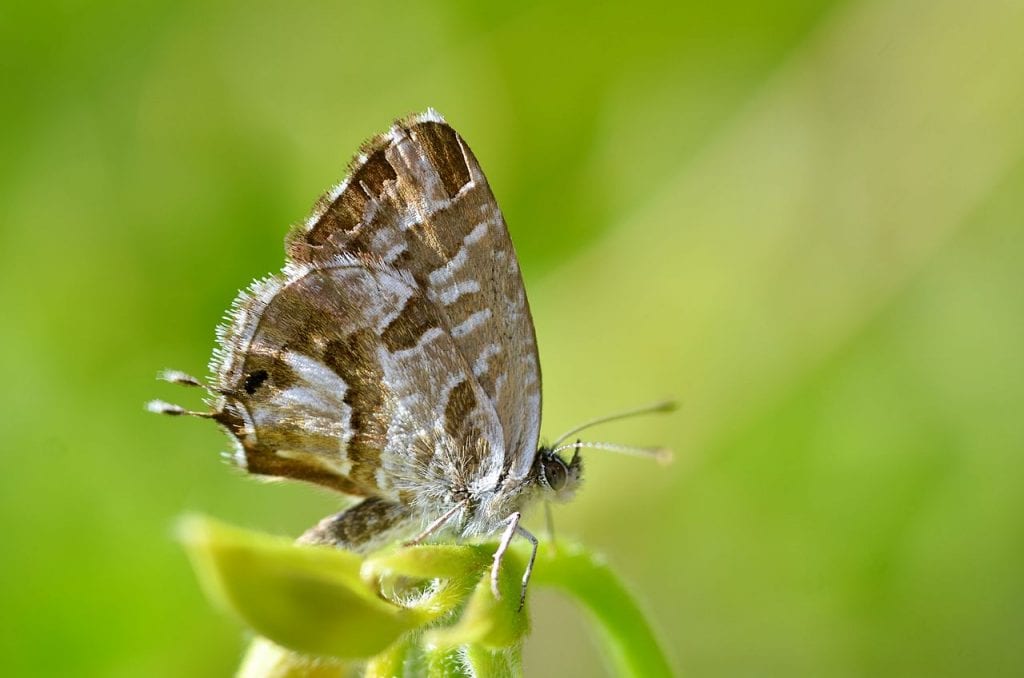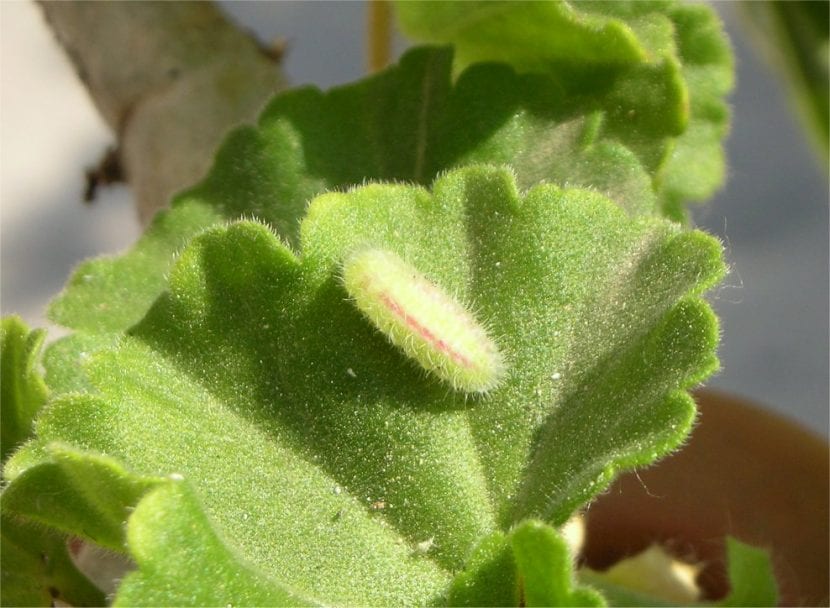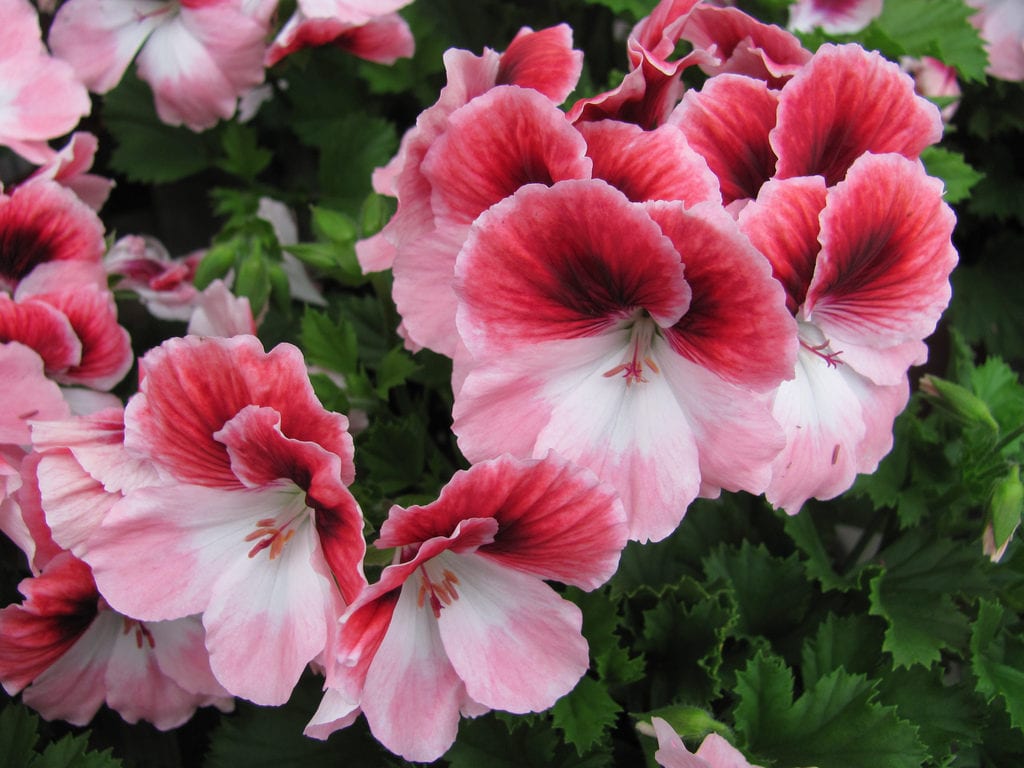
The geranium is a plant that, with just a few basic care, grows and blooms that it is a pleasure to see. However, he has a potential enemy who can, in the worst case, can finish him off. Its scientific name is Cacyreus marshalli, although it is better known by the names of geranium worm or geranium borer.
This insect is a butterfly that measures about 2cm that lays its eggs in the flower buds so that its larvae complete their cycle by feeding on the stems of the plant. But, Can anything be done to control it?
Learn to distinguish it

Larva of the Geranium butterfly (Cacyreus marshalli).
The geranium butterfly is an insect native to Africa. It arrived in Spain in 1987, entering the island of Mallorca, using a cutting that was infested with eggs or larvae. From there it spread throughout the country causing very serious damage, since although in its place of origin it has natural enemies, none have yet been found here, so the plague is only spreading.
In the adult phase it is a butterfly that measures about 2cm, which the damage they cause is to deposit their eggs in the geraniums. The caterpillars on the other hand are light green as you can see in the image above, hairy, and they are the ones that begin to weaken the plants. The pupae, also hairy, are dark green, turning brown one or two days before becoming adults.
What damage do they cause?
It is a pest that acts very fast, so many times when we see the first symptoms the plant will need a good pruning to fully recover. The larvae eat and empty the stems, piercing them. Consequently, the weakening of the plant is rapid, and the leaves wilt in a matter of days.
Can anything be done? Fortunately, yes.
Geranium butterfly control

This is what you can do to keep your geraniums healthy all year round:
- Treat once a week with Cypermethrin 10%, spraying the plant (early morning or evening) and watering the substrate. It can serve as both a preventive and a curative.
- If you prefer to use natural remedies, you can do preventive treatments with natural pyrethrins applied with a wetting agent (such as potassium soapfor example) every 3-4 days during warmer months.
- Before buying, inspect all parts of the plant well, especially the stems. If you see holes in them, withered leaves, or anything else that you do not like, do not buy it as otherwise it could infect your other geraniums.
- Fertilize and water regularly to keep you healthy.
- In the event that it is already infested, cut the affected stems.
With these tips, your geranium will surely grow without problems 🙂.
GREAT EXPLANATIONS, I'LL DO IT IMMEDIATELY, GRATEFUL.
Thanks to you, Orlando. We are glad that it has been useful to you.